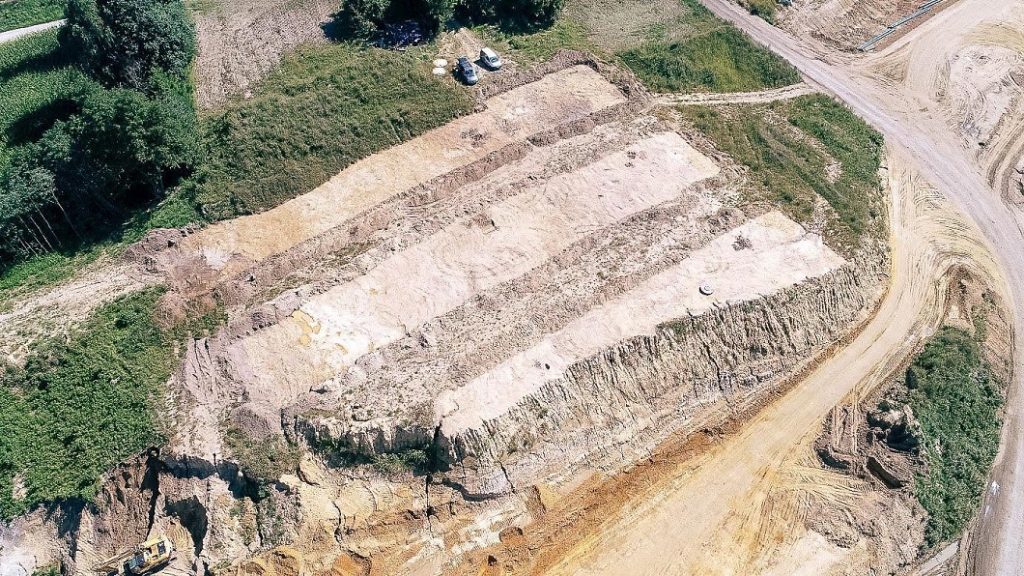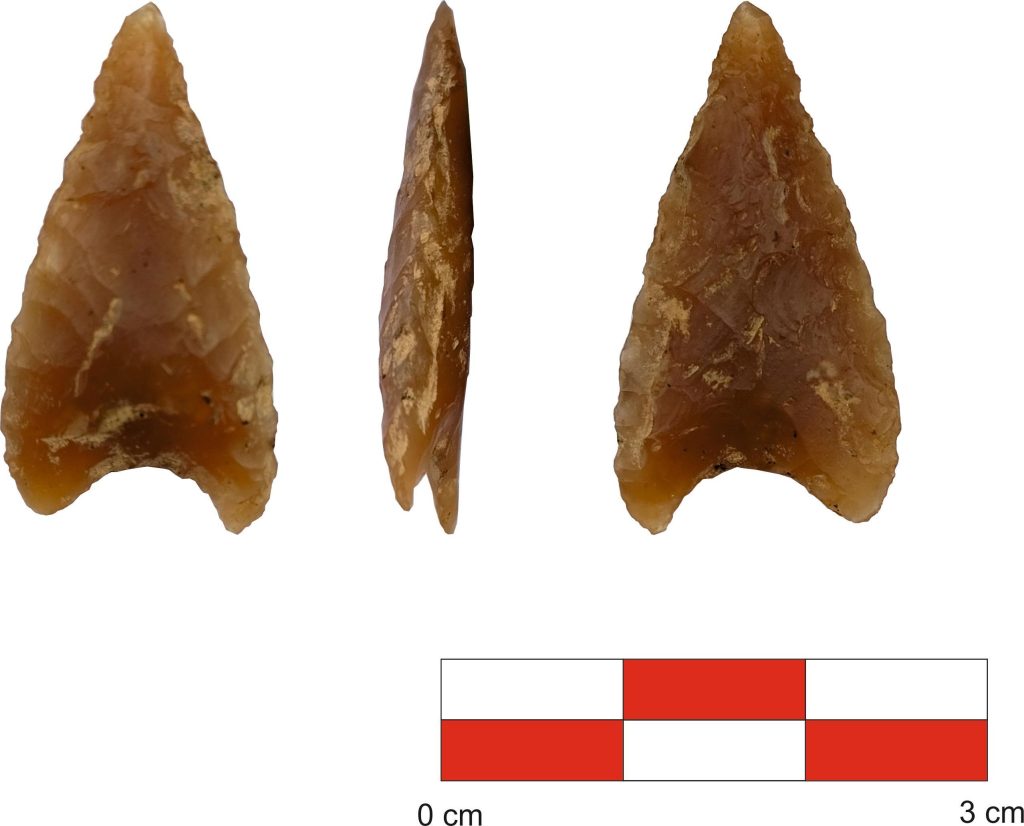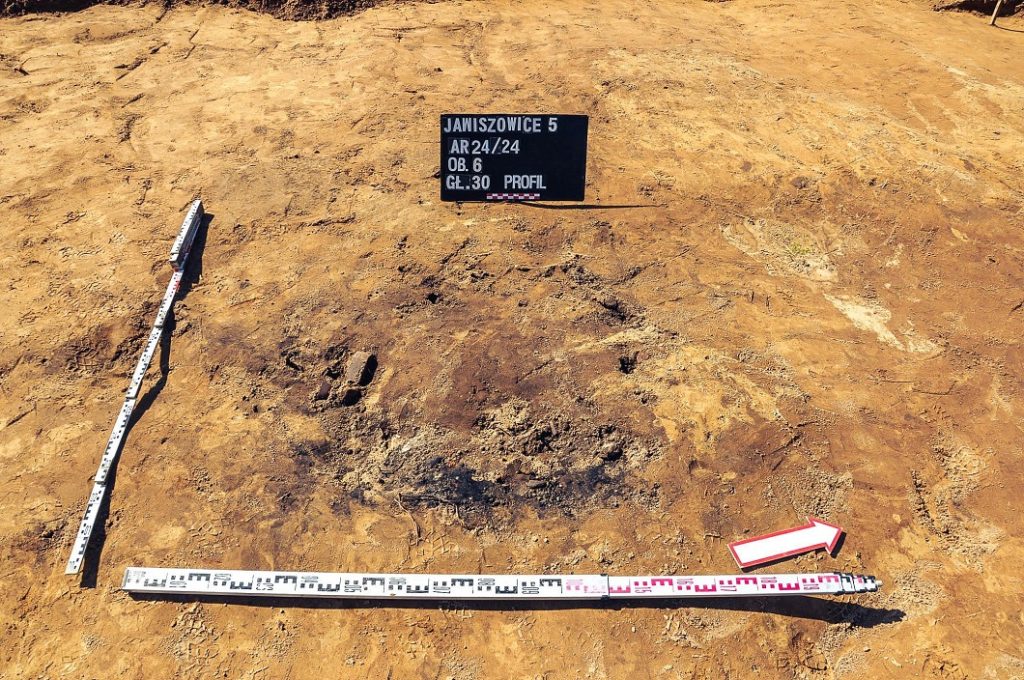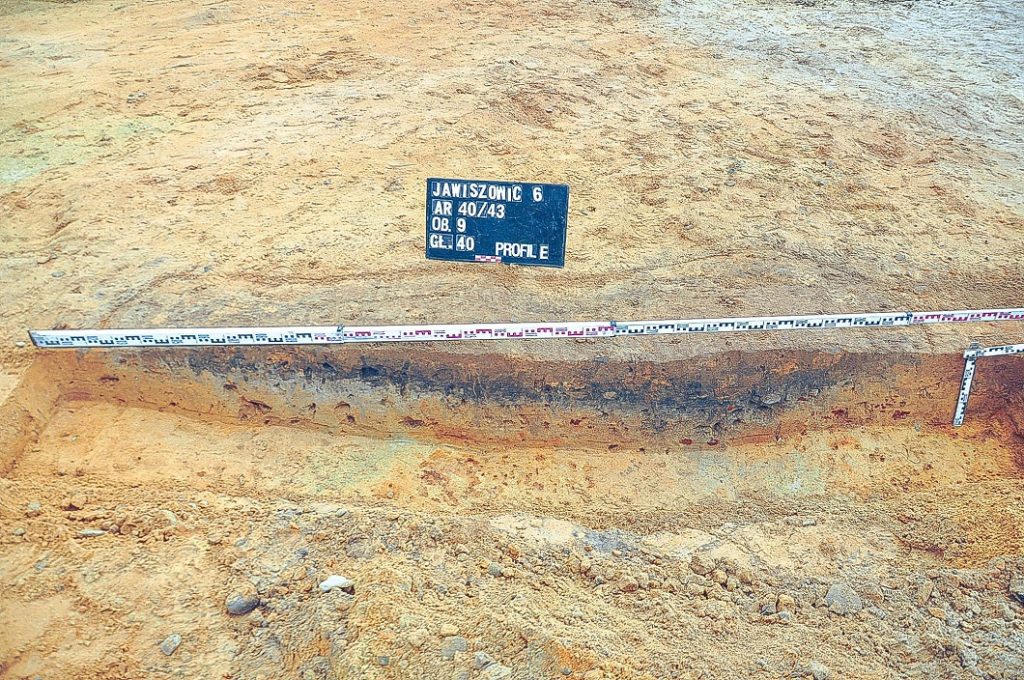
Archaeologists find Bronze Age settlement in Poland during a survey ahead of S1 highway construction
A Bronze Age settlement was uncovered during the construction of the S1 highway between Oświęcim and Dankowice in Poland.
According to a press release by the General Directorate for National Roads and Motorways (GDDKiA), two cultural layers were encountered during the works carried out at two stations in the Jawiszowice region.
One of these cultural layers is the Lusatian culture, which occurred in the Bronze Age and early Iron Age in 1100 – 400 BC, and the other is the Mierzanowice culture, which developed in the early Bronze Age, i.e. 2300 – 1800 BC, in the area under investigation.

The archaeological investigations were carried out in accordance with the decisions of the Conservator of Monuments of Małopolska Voivodeship.
According to the researchers, clay vessels and flint fragments found at the site suggest that one of the sites was associated with the Lusatian culture, a Bronze Age/Early Iron Age people from 1100 to 400 BC.

Eight excavated archaeological objects were discovered in the area called Jawiszowice 5. Six of them are deep spring pits that originally served as cellars. The other two are so-called pole pits, i.e. the remains of wooden poles driven into the ground, which were part of an above-ground structure not uncovered during the research. Fragments of clay pots were also found during the discovery of the objects.
Planigraphy, 12 flints and 34 pottery sherds were also discovered at Jawiszowice 5.

At Jawiszowice 6, located a few hundred meters from the excavation site of Jawiszowice 5 and also discovered during the archaeological supervision, six archaeological objects were recorded: three postholes with remains of wooden structures, two service pits (former cellars), which appear to be broadly related to the functioning of the settlement, and an object identified as a ditch.

24 sherds of pottery belonging to the Mierzanowice culture, which flourished in the Early Bronze Age, i.e. 2300 – 1800 BC, were found. Noteworthy is the discovery of a flint arrowhead intricately crafted from Jurassic flint. 34 artifacts, flint and three sherds of pottery were also recovered from the site.
The expected completion date of the S1 Motorway has been delayed from July 2024 to June 2025 until excavations have fully documented both sites.
Cover Photo: GDDKiA
You may also like
- A 1700-year-old statue of Pan unearthed during the excavations at Polyeuktos in İstanbul
- The granary was found in the ancient city of Sebaste, founded by the first Roman emperor Augustus
- Donalar Kale Kapı Rock Tomb or Donalar Rock Tomb
- Theater emerges as works continue in ancient city of Perinthos
- Urartian King Argishti’s bronze shield revealed the name of an unknown country
- The religious center of Lycia, the ancient city of Letoon
- Who were the Luwians?
- A new study brings a fresh perspective on the Anatolian origin of the Indo-European languages
- Perhaps the oldest thermal treatment center in the world, which has been in continuous use for 2000 years -Basilica Therma Roman Bath or King’s Daughter-
- The largest synagogue of the ancient world, located in the ancient city of Sardis, is being restored











Leave a Reply